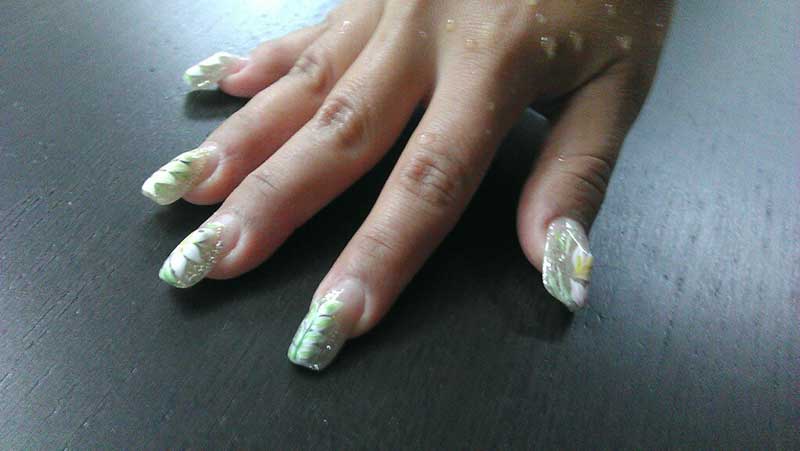Using smart clothing to track vital statistics is no longer a future vision. The wearables industry is steadily moving away from the bulky FitBit-type wrist devices towards more subtle and more effective smart clothing and accessories. Most smart clothing can already monitor our heartbeat, temperature, breathing rate, calories burnt, sleeping patterns and more. Their potential applications – beyond fitness – are virtually unlimited. Wearable technology also has a huge impact on the future of fashion and it won’t be long before our shirts have GPS-enabled buttons and our shoes charge our smartphones.
The appeal of unobtrusive wearables – fitness tracking made fashionable
The wearable tech market is saturated with fitness products for workout tracking. Even though the devices have improved light years from the huge things we wore a couple of years back, we still have to (remember to) put them on and take them off and they are still far from inconspicuous. And most will agree that wearable tech is best when it’s unobtrusive. Smart clothes or understated watches that actually look like watches instead of bulky futuristic wrist devices appeal to consumers the most. Samsung has developed various brilliant smart clothing and accessories prototypes, including a stylish suit with cuffs containing NFC buttons that enable data transfer. They have also designed a belt that informs you when you gain a little too much weight and a golf shirt that monitors your swings. These wearables share the same technology as your average FitBit-type fitness trackers but you don’t see the tech because it is part of the clothes and accessories you wear.
Not just for fitness tracking – some weird and wonderful smart fashion applications
Currently, smart clothes are mainly designed for fitness type tracking applications. There are some very interesting prototypes of clothing and accessories, however, that do much more than, or even something completely different from tracking wellness metrics.
Solar power enables you to charge your phone with your clothes
Flexible solar panels have infinite applications and clothing designers have already let their creative juices flow by creating garments and accessories that can power electronic devices. Dutch Fashion designer Pauline van Dongen, in collaboration with solar energy expert Gert Jan Jongerden and Christiaan Holland from the HAN University of Applied Sciences designed lightweight garments with embedded solar panels. When exposed to the sun for an hour, the comfortable and fashionable garments can charge a smartphone battery up to 50%. Italian men’s fashion house Zegna created the Zegna Solar Ski Jacket, the world’s first ski jacket powered by solar energy. The collar of the jacket contains solar cells that convert sunlight into power which can be used to charge any mobile device. The collar also stores energy and can even be removed so that it can be used as a power source even when not exposed to the sun.

Now you can really wear your heart on your sleeve
We’ve all had them – mood rings, those pieces of jewellery that change colour according to your ‘mood’. They haven’t been in fashion for a while but the craze could actually resurface with the GER Mood Sweatshirts by Sensoree that were launched a while back. For the Mood Sweater to work you need to hold a sensor in your hand. This sensor gathers data about your levels of excitement and transmits this to the collar of the shirt after which LEDS light up in various colours. When the wearer feels tranquil, the collar turns green. When he or she is relaxed, blue LEDS light up. Excitement is translated to a purple colour and when the wearer is nervous or in love, the collar turns red. Feelings of ectasy are reflected in yellow. The technology used is the Galvanic Skin Response (GSR) system which uses the moisture levels on the skin to analyse the level of excitement.
These boots are made for charging
In the future, when you are out and about and the battery of your smartphone is about to die, you can just charge it by connecting it to your shoe, ensuring your devices is never out of juice and reducing your dependency on your phone battery. This incredible energy harnessing and storage technology was developed by mechanical engineers at UW Madison College of Engineering in Wisconsin. The technology consists of an energy harvester, embedded in footwear, that captures and stores the energy you produce while walking. This technology could provide a source of power that never runs out and would be especially suitable for people in remote areas who have no access to properly functioning power grids. Walking humans can produce up to 10 watts per foot – energy that is normally wasted in the form of heat – that can be used to power a flashlight or charge mobile devices such as smartphones, tablets and even laptops.
Turn your nails into sparkling, high-tech magic wands
Many women thank the heavens for artificial nails. No more chipping nail polish and hands always look gorgeous. Technology is taking this a step further, however, with nails turning into bewitching high-tech wands. Beauty Technology Nails are acrylic nails with small magnets or glass RFID capsules. The embedded magnets can enhance the wearer’s capabilities by enabling access to magnetic switches in smart devices. RFID tags in the nail polish can be read by an RFID reader, enabling the wearer to carry out tasks such as open doors, scan items, find objects, gain access to buildings or ride on public transport.

Create your own clean, pure space from your wrist
The Hand Tree, a personal air purifier in the form of a wrist band, was one of the designs entered into the Electrolux Design Lab competition. Created by Alexandr Kostin of the Russian Federation, the anti-pollution wrist device basically works like a plant. It sucks up carbon dioxide and then releases oxygen and removes harmful gases and dust from the air. It can purify the air in your direct surroundings when using Personal Mode, but it can also filter the air in general – using Global Mode. The purifier has a rechargeable battery, a reusable carbon filter and a diode screen that emits organic light.
Be stylish and safe at the same time – GPS enabled Cuff jewellery
Virtually everything can be fitted with GPS. Buttons can track your movements, bracelets can learn your habits and give you tips and hints and your watch can communicate with other smart devices. Wearables such as the Cuff line of jewellery are designed as safety devices but nobody would be able to tell as the devices can easily pass for attractive pieces of jewellery. In the event of an emergency, the Cuff app enables wearers of the jewellery to notify a pre-selected group of friends or family members of where you are, at the touch of a (inconspicuous, of course,) button.
Dresses that respond to sound and move when you look at it
Amy Winters is designer at Rainbow Winters. She creates garments that respond to their environment. One of her creations, a dress made with holographic leather, actually responds to sound. The dress lights up when volume levels increase – music made visible. Another one of her designs, a swimsuit, has a centre panel which changes into purple dots as soon as it is exposed to sunlight. Designer Ying Gao has designed dresses that move when you look at them; when the embedded eye-tracking technology senses your gaze, the minuscule motors in the fabric move parts of the dress to create patterns. The base layer of the fabric is made from glow-in-the-dark thread or photo-luminescent thread which also makes the dress light up.
The potential applications for wearable tech in fashion are limitless and it will be interesting to see where designers will take this technology. One thing is for sure; we are moving towards a future in which most if not all of our computers will be embedded in our clothing and accessories and even inside our bodies.
Share via:



